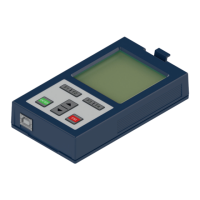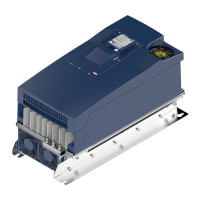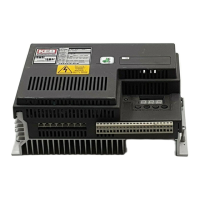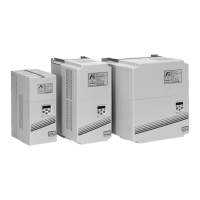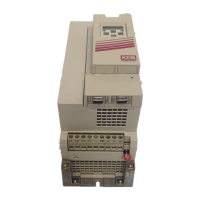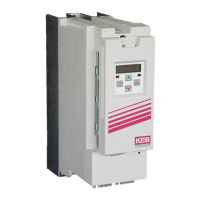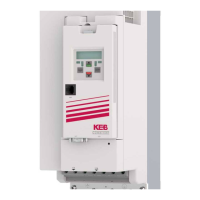∆n [rpm
] =
∆position
scan time [min]
=
resolution ∙1000 ∙60
scan time ec26 [ms]
=
resolution∙60000
scan time ec26[ms]
6.1.4.1 Theoretical fluctuation of the speed due to the position resolution
Minimum speed fluctuation for resolver and default setting of ec26 by the position
resolution:
Default setting ec26: 2 ms
position resolution for resolver: 1 revolution = 8192 => resolution = 1 / 8192 =
0.0001221
∆n [rpm ] =
0.000121 ∙ 60000
2
= 3.66 rpm
6.1.4.2 Real fluctuation of the speed
Additional to this minimal fluctuation at the real drive there are errors in the signals,
the encoder mounting at the motor, the transmission path, the input circuit, the sig-
nal detection, etc. These factors cause additional fluctuations of the speed and
thus influence the control.
Example for a resolver:
Due to the errors described above, the reliable position resolution is reduced to 10
bit (1 revolution = 1024 = > real resolution of the resolver = 1/1024 = 0.000977).
When the scan time is set to 250 µs (0.25 ms), there is a speed fluctuation of:
∆n [rpm ] =
0.000977 ∙ 60000
0.25
= 234.4 rpm
Example for a SinCos encoder
An encoder with a high real resolution must be selected if the dynamics of the ap-
plication require a short speed scan time. For a SinCos encoder with optical scan-
ning with 2048 increments, the following real resolution is obtained:
Number of signal periods: 2048 increments (corresponds to 11 bit)
High resolution real 8 bit high resolution (instead of the ideal 13 bit)
real resolution: 1 revolution corresponds to 2
19
= 524288
resolution = 1 / 524288 = 0.00000191
∆n [rpm ] =
0.00000191 ∙ 60000
0.25
= 0.46 rpm
6.1.4.3 Effects of the scan time
As shown in the previous chapters, a short scan time causes a very high noise at
the speed actual value when using encoders with low position resolution or position
accuracy.
The speed fluctuations can be reduced by increasing the scan time.
This also reduces the achievable dynamic of the speed control circuit and thus of
the drive.

